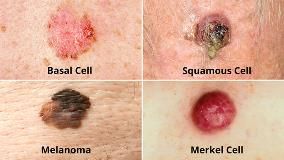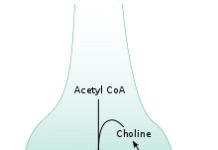It’s easy to panic when you notice a lump on your skin. You may wonder if it’s melanoma or another type of skin cancer.
But sebaceous cysts — slow-growing bumps under the skin that can appear on the ears, scalp, face, torso, back, or groin area — are typically harmless. And while they can be irritating (or unsightly), they are not cancerous. Here’s what you need to know — and do — if you have a sebaceous cyst.
Signs and Symptoms of an Epidermoid Cyst
These dome-shaped cysts can be pea-sized, or grow to a few inches or larger. They grow very slowly, and they’re not painful. If you touch them, you should be able to move them around. They often have a central small black dot, or punctum, through which sebum accumulates.
Sometimes, however, they can become inflamed, infected, or suddenly rupture, which can increase the risk of infection (more on that later). Occasionally, they occur on a site that is constantly irritated, such as a cyst on your neck that rubs against your collar, or one on your back under a bra strap.
How Is an Epidermoid Cyst Diagnosed?
Usually, your doctor can diagnose a sebaceous cyst by examining your skin, though sometimes he or she may perform a biopsy to make sure it’s not a symptom of another condition. Before your exam, it’s a good idea to note any recent skin injuries, when you first noticed the cyst, if you’ve had any other cysts, and if you have a family history of cysts. Your general practitioner will usually be the one to examine you, and then after that you may be referred to a dermatologist.
Prognosis of Epidermoid Cysts
Most sebaceous cysts can be ignored, since they are not dangerous. Some go away on their own; others grow slowly, but unless they are bothering you, or get infected, you don’t need to do anything about them.
RELATED: What Is Pilonidal Cyst?
Treatment and Medication Options for Epidermoid Cysts
If a sebaceous cyst does not cause problems and its appearance doesn’t bother you, you probably don't need any treatment, as mentioned above.
Medication and Surgical Options
If a cyst becomes inflamed, a doctor can inject it with a steroid to reduce swelling. Cysts that become infected, on the other hand, may need to be surgically removed. Dermatologists and plastic surgeons can perform this procedure. To do this, your doctor will make a small puncture and remove the contents. But cysts frequently return after removal and will ultimately need to be surgically removed again. If a cyst becomes swollen or infected, antibiotics may be called for before surgery. Larger cysts may also need to be removed if they cause hair loss on the scalp, interfere with clothing (for instance, if a piece of clothing routinely rubs the cyst, causes irritation), or if the cyst is in an obvious place, like the face.
After the treatment, be sure to follow your doctor’s instructions for keeping the wound clean once you get home, and ask if you should return for a follow up visit.
Alternative and Complementary Therapies
If a sebaceous cyst becomes swollen or tender, home treatments may also help. One easy thing to try: applying a warm moist compress, which can help the cyst drain. What not to do: Resist the urge to pop or squeeze the cyst, like a pimple. It won’t end well.
Prevention of Epidermoid Cysts
Unfortunately, there’s no known way to prevent them from developing.
Research and Statistics: Who Has Epidermoid Cysts?
Related Conditions and Causes of Epidermoid Cysts
Resources We Love
The Cleveland Clinic offers has a quick and clear guide to how these cysts develop and how they’re treated.
While these cysts aren’t skin cancer, if you want to know more about what is and isn’t skin cancer, the National Cancer Institute has a wealth of information, including a tool that can help you recognize the signs. But remember: A doctor is the only one who can tell you for sure.
Additional reporting by Paula Derrow and Kathleen Doheny.
Editorial Sources and Fact-Checking
References
- Sebaceous Cysts. Cleveland Clinic.
- Zito P, Scharf R. Epidermoid Cyst. StatPearls. September 2020.
- Weir C, St. Hilaire N. Epidermoid Inclusion Cyst. StatPearls. August 2020.
- Epidermoid Cysts. Mayo Clinic.
- Epidermoid Cysts. Harvard Health Publishing. July 2019.
- Zuber T. Minimal Excision Technique for Epidermoid (Sebaceous) Cysts. American Family Physician. April 2002.
- Kim KT, Sun H, Chung EH. Comparison of Complete Surgical Excision and Minimally Invasive Excision Using CO2 Laser for Removal of Epidermal Cysts on the Face. Archives of Craniofacial Surgery. April 2019.
- Davis S, Narahari S, Feldman S, et al. Top Dermatologic Conditions in Patients of Color: An Analysis of Nationally Representative Data. Journal of Drugs in Dermatology. April 2012.
- Kawase M, Egawa K, Ishiji T, Nakagawa H. Human Papillomavirus Type 6/11 Identified in an Epidermoid Cyst of the Scrotum. The Journal of Dermatology. February 2018.
Sources
- Aaron D. Cutaneous Cysts. Merck Manual Consumer Version. September 2020.
- Agnetta V. Boards Fodder: Cysts. Directions in Residency. Winter 2018.
- Epidermoid and Pilar Cysts. British Association of Dermatologists. March 2020.













































